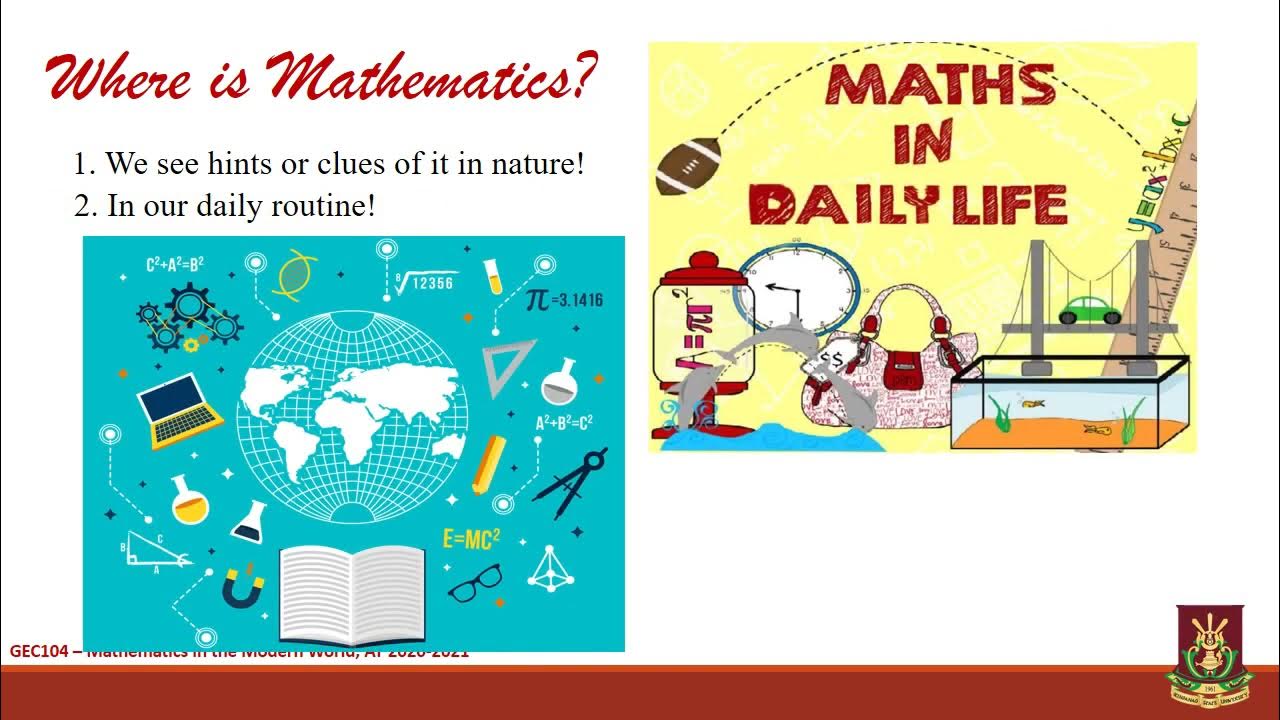University of San Diego professor on applied mathematics and faith | Satyan Devadoss
Summary
TLDRSafi and Devdas, a professor of mathematics and computer science at the University of San Diego, explores the beauty of shapes and patterns in mathematics. He delves into how 'applied mathematics' has evolved, impacting various fields like encryption and data analysis. He also discusses the significance of topology in understanding complex data sets, such as identifying diabetes types. Devdas emphasizes the importance of not letting mathematics overshadow reality and the complexity of human experiences, advocating for a balanced appreciation of all disciplines and the physical world over mere data and quantification.
Takeaways
- 📚 Safi and Devdas is a professor of mathematics and computer science at the University of San Diego, focusing on the study of shapes and their applications.
- 🔍 Mathematics, to him, is about understanding patterns and structures in numbers, functions, and images.
- 🌐 The term 'applied mathematics' has evolved from its 20th-century meaning of aiding engineering and science to encompass all areas of mathematics in the 21st century.
- 🔑 Number theory, for example, has become crucial for data encryption and is widely used by organizations like the NSA.
- 🎰 The concepts of probability and chance are fundamental to prediction analysis in business, dealing with large volumes of data.
- 🧠 Topological data analysis, a field pioneered by Gunnar Carlsson, allows for understanding the shape of data in a fuzzy setting, which is beneficial for noisy real-world data.
- 🍺 An example of applied mathematics is discerning patterns in beer characteristics, which can be analyzed to create a 'family tree' of different beers.
- 👨🔬 Mathematics is not meant to overshadow reality but to partner with it, offering alternative perspectives and methods for understanding complex issues.
- 🌟 The speaker believes that all disciplines, from mathematics to the arts, are valuable and should be viewed as a collective tapestry of human knowledge.
- 🚀 The speaker is intrigued by the idea of what mathematics will be like in a perfect world, such as the new heaven and earth, and how it will continue to apply to a physical world.
- ✅ Art and mathematics can intersect to create physical representations of mathematical concepts, like the dodecahedron sculpture that was taken to Burning Man, symbolizing deeper questions about humanity and the universe.
Q & A
What is the primary focus of Safi and Devdas' work as a professor?
-Safi and Devdas' work focuses on studying shape, including how it can be framed, measured, looked at, and understood.
How does Safi and Devdas define mathematics?
-Safi and Devdas defines mathematics as being about making sense of patterns and structures of things, such as numbers, functions, and pictures.
What is the significance of the term 'applied mathematics' in the 21st century according to the professor?
-In the 21st century, 'applied mathematics' is not limited to traditional subjects like differential equations or calculus. Instead, every mathematical idea can be considered applied because it can be used to solve real-world problems across various disciplines.
How does the professor relate mathematics to everyday activities like using a credit card?
-The professor relates mathematics to everyday activities by explaining that mathematical concepts, such as number theory, are used in data encryption, which is involved when swiping a credit card.
What is the role of topological data analysis in understanding complex data?
-Topological data analysis allows for understanding the overall shape of complex data in a fuzzy setting, which is helpful because most real-world data contains noise and imperfections.
How did Safi and Devdas apply mathematical concepts to the study of beer?
-Safi and Devdas applied mathematical concepts to the study of beer by analyzing 15 to 25 characteristics of different beers to create a 'family tree' that shows how they are related to one another.
What is the professor's view on the relationship between mathematics and reality?
-The professor believes that mathematics should partner with the world to provide a different perspective, rather than trying to trump or replace the reality of a situation.
Why does the professor caution against the over-reliance on quantification and data?
-The professor cautions against over-reliance on quantification and data because it can trivialize complex human experiences and issues that cannot be easily distilled into numbers.
What does the professor believe attracts him to the Christian faith?
-The professor is attracted to the Christian faith because it provides answers to questions about human existence, emotions, and relationships that science does not address.
How does the professor envision the role of mathematics in the new heaven and the new earth?
-The professor envisions that mathematics will continue to be relevant in the new heaven and the new earth, as it will be part of a physical world that is an improved version of the current one.
What was the unique aspect of the sculpture created by Safi and Devdas and his team for Burning Man?
-The sculpture was unique because it was shaped like a dodecahedron, had a mirrored interior, and could be unfolded and laid flat, reflecting both mathematical and cosmological concepts.
Outlines

Dieser Bereich ist nur für Premium-Benutzer verfügbar. Bitte führen Sie ein Upgrade durch, um auf diesen Abschnitt zuzugreifen.
Upgrade durchführenMindmap

Dieser Bereich ist nur für Premium-Benutzer verfügbar. Bitte führen Sie ein Upgrade durch, um auf diesen Abschnitt zuzugreifen.
Upgrade durchführenKeywords

Dieser Bereich ist nur für Premium-Benutzer verfügbar. Bitte führen Sie ein Upgrade durch, um auf diesen Abschnitt zuzugreifen.
Upgrade durchführenHighlights

Dieser Bereich ist nur für Premium-Benutzer verfügbar. Bitte führen Sie ein Upgrade durch, um auf diesen Abschnitt zuzugreifen.
Upgrade durchführenTranscripts

Dieser Bereich ist nur für Premium-Benutzer verfügbar. Bitte führen Sie ein Upgrade durch, um auf diesen Abschnitt zuzugreifen.
Upgrade durchführenWeitere ähnliche Videos ansehen
5.0 / 5 (0 votes)






